Shortly after my arrival in Takamatsu, of course I had to take a small daytrip to Ogijima.
Here is the tale of that day in pictures and a few comments:
The first good news of the day were that the original Meon was going to take us to Ogijima. It is my understanding (and my experience on my past trips there) that it was used less and less these days.
As soon as we landed, we went to have lunch at Madoka, one of the few restaurants on the island (the only permanent one?) It was our second time there. Food was as delicious as the previous time. Note that fish and seafood come from the island, actually the owner catches most of it himself. I had Sashimi, 康代 had octopus tenpura (the best octopus I have ever had was in Madoka). Note the miso soup full of fish and crab.
The owners remembered me from my last time in their restaurant back in June. I guess they don’t have that many foreign customers, even less French ones who know and love their island. It’s nice to slowly getting to know the islanders.
The Seto Inland Sea from the northern tip of Ogi’s port. The island on the right is Naoshima. The big boat is here to remind us that while these islands all are somewhat isolated, they’re in the middle of one of the biggest shipping route in Japan with boats coming from all of Asia to Kobe and Osaka.
Between November and March, all of the Art Setouchi artworks are closed, but it doesn’t mean that there is nohing going on as we were gladly surprised to stumble upon a photo exhibit spread out all over Ogichō. Most of the pictures are from the 1950’s and depict different aspects of Ogijima at the time.
There were about 250 kids on Ogijima in the 50’s (for a population of about 1000). Today, there are less than 10 and unforunately the school has closed last year as the kids in age of going to school now go to Junior High in Takamatsu.
Ogijima’s “East Coast” port (yes, Ogi has two ports!) On the left, Megijima seen from an unusual angle.
On the background, you can see how – not so long ago – Ogijima was mostly covered with fields. Also, while Onba are today an important part of Ogijima’s culture and identity, they’re a relatively recent thing. Back in the days, women carried everything on their head.
I tried to take a picture from the same spot as the previous one, mostly to show you how the fields have been replaced by wild vegetation, but the tree on the right grew too in the past 50 years.
Kamo-jinja, Ogijima’s other temple.
There always are “kawaii” things in front of this house. During this trip to Ogijima, I learned that it was actually a small hotel. So, there are three Minshukus/hotels on Ogijima!
Inside Ogijima’s school circa 1959
To my knowledge, kiwis are not a extremely common fruit in Japan (not imported that is), hence my surprise to find some on Ogijima.
Shima Kokoro Isu‘s chairs haven’t moved a bit since the end of the Setouchi International Art Festival. Well, those made by the kids that is, the other ones have been “borrowed” by the older people when they gather behind the shrine in the afternoon, but that was the whole point of these chairs.
Toyotama-hime Jinja, Ogijima’s main shrine. Traditionally, pregnant women from the whole area came to this shrine to ask the local Kami for a safe pregnancy and childbirth. We arrived from the back of the temple, where two local women were chatting. Usually when they see us, they always ask about me, as I’m a foreigner and all, but this time, the first and almost only thing they said when they saw 康代, was to go pray at the shrine. Unbeknownst to them, this had been our intention all along. A few weeks earlier we had this conversation (not a very serious one) that we must not forget to go to Toyotama-hime Jinja before the baby is born.
If I understand correctly, this stone honors Ogijima men who died on the battlefield. During WW2 I supposed, although I don’t really know.
There cannot be a trip to Ogijima without a stop to the Onba Factory! It is officially closed until March, but Mr. and Mrs. Oshima were there and despite the fact that we arrived unannounced, and despite the fact that they were busy, they welcomed us very warmly as they always do.
As not everybody can have their own Onba at home, Onba Factory now produces “pocket Onba” that you can bring anywhere with you! Of course, I got one!
While Onba Factory was originally a five people project, since the end of the Festival, Yoshifumi Oshima is more or less the only one making it a long term project. However, the other members leave some of their art in the Onba Café. Here, some of Atsushi Yamaberi current work.
Organ by Tomoko Taniguchi is still around.
Still no luck with Maison de Urushi! Out of the four times I tried to go, it was open only once. Ok, this time, it was supposed to be closed.
Those are also some sort of ancestors for the Onba. Except that they had no wheels, so those were attached on your back.
Since I’ve moved to Takamatsu, living on Ogijima (or at least having a house there for week-ends, vacations and friends) has become less of a fantasy and more of a probable reality some day. So during this last trip, one little game I had was to check out the various abandoned houses to see which one I could buy. This one was one of my favorites, but it would require major renovation work to be livable again.
Waiting for the ferry at Ogijima’s Soul as the day was coming to an end.
Bye bye Ogijima, see you soon…
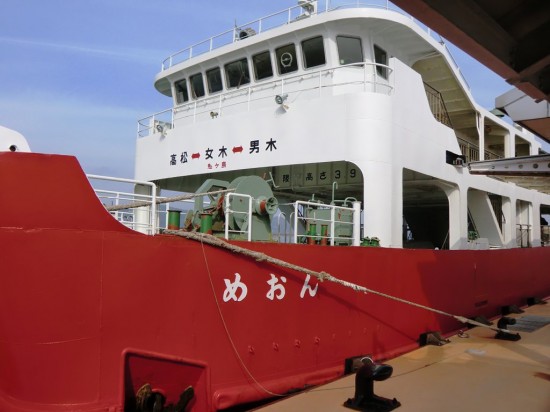
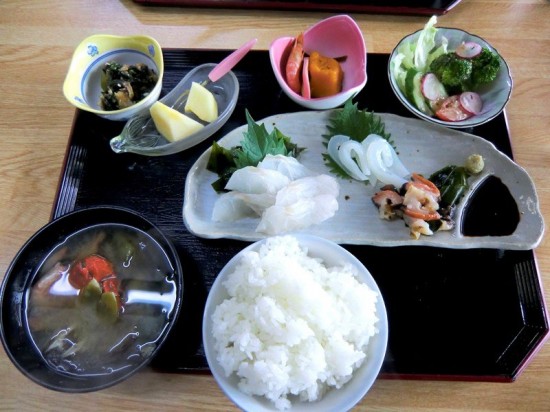
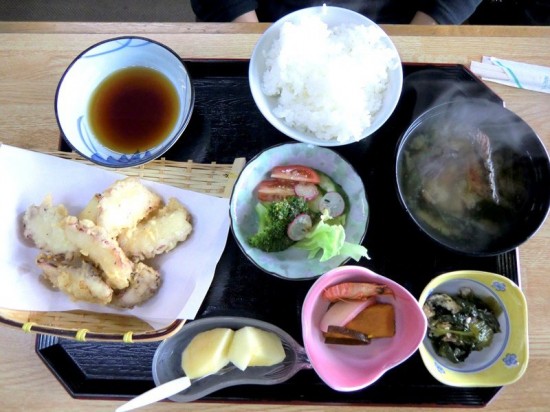
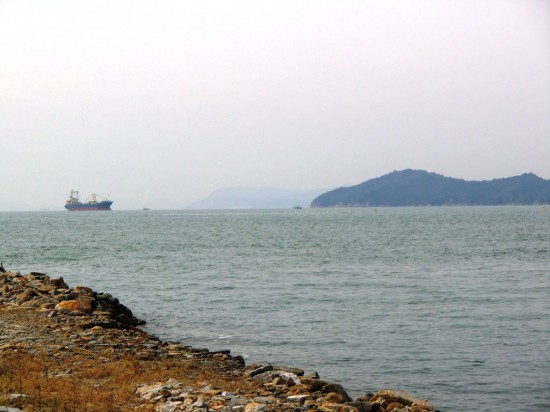
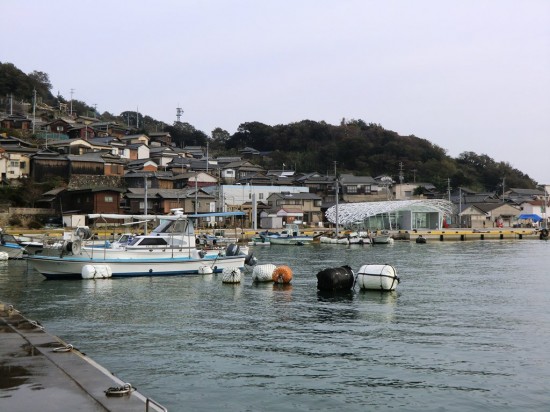
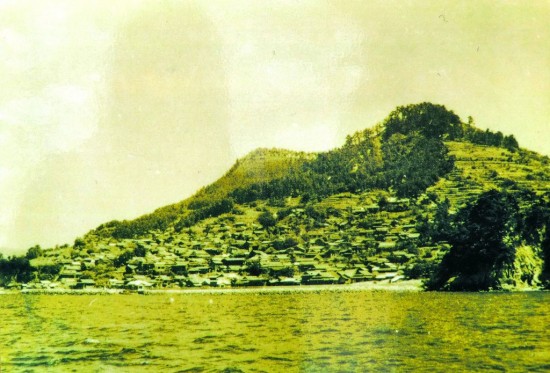
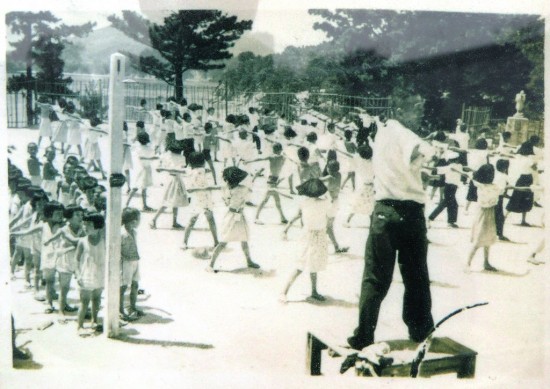
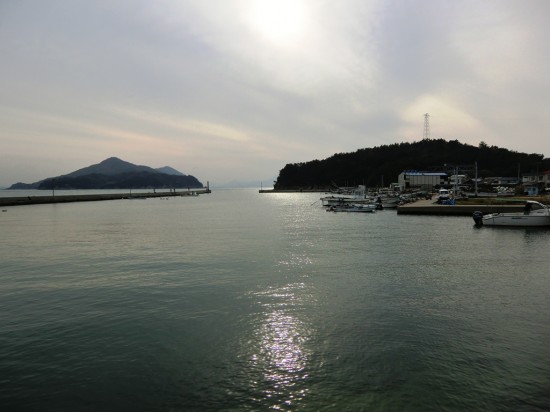
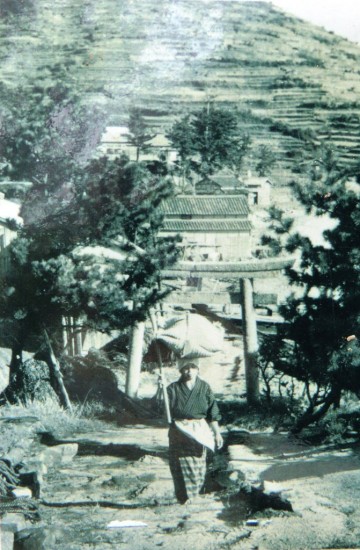
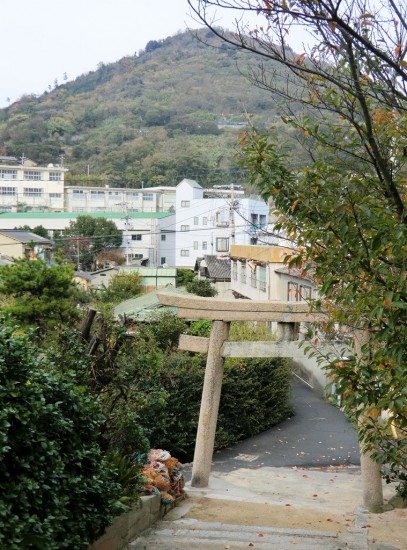
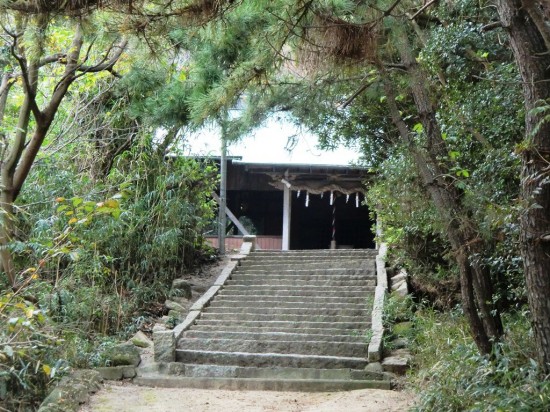
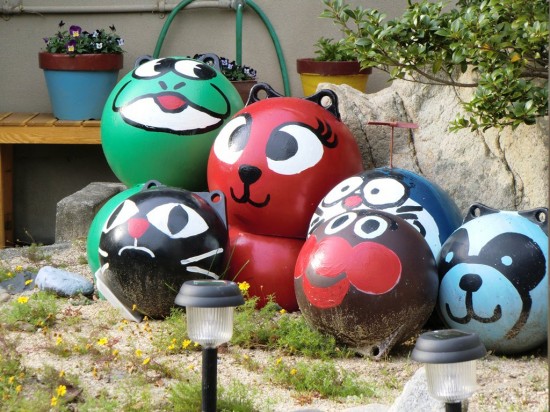
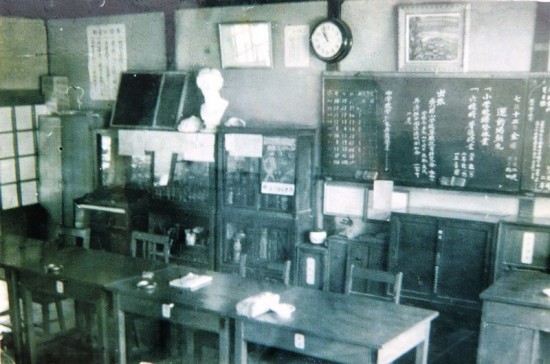
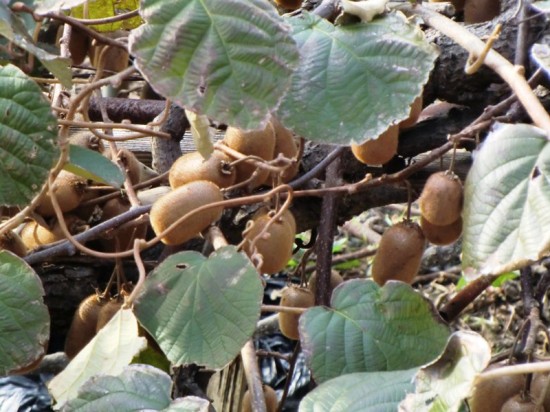
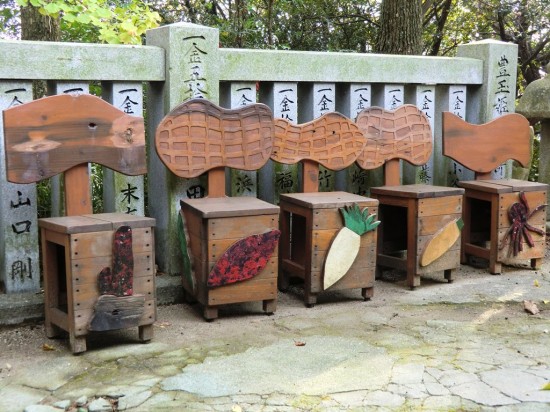
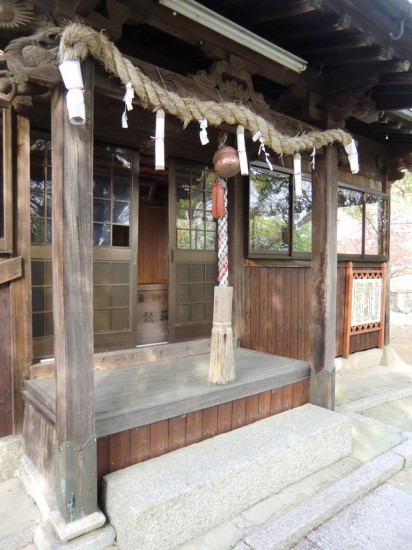
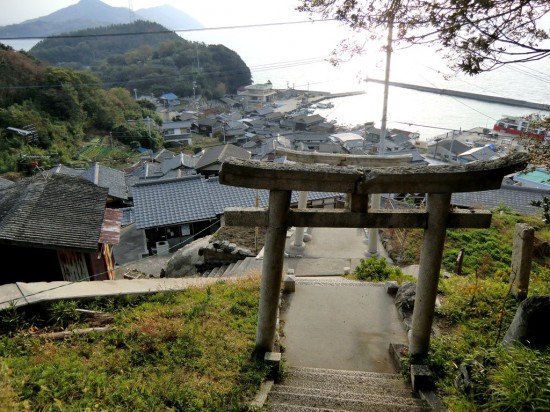
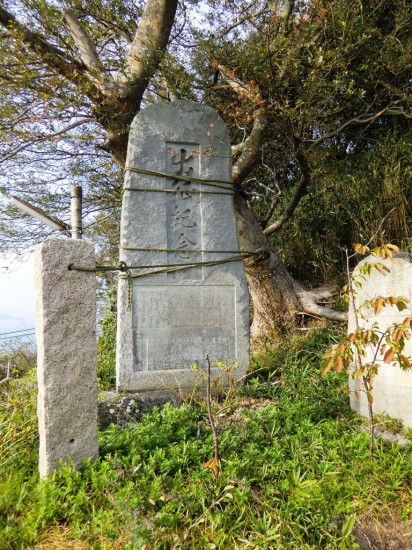
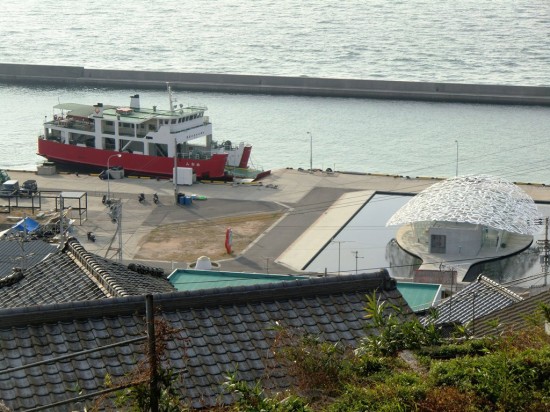
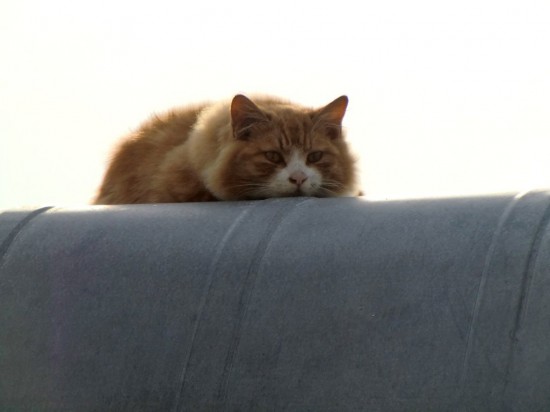
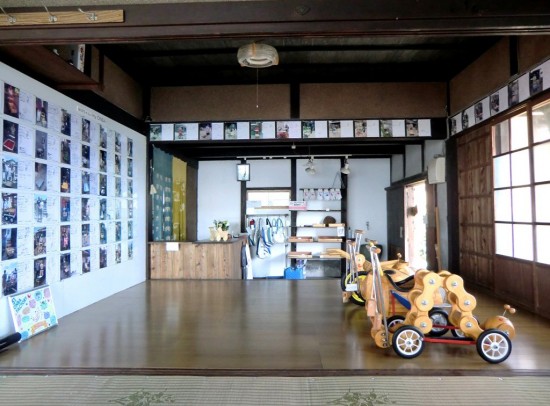
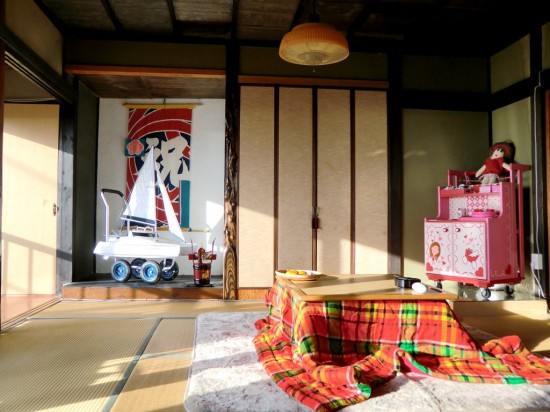
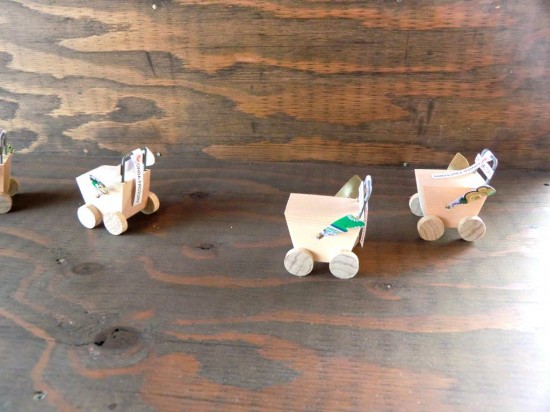
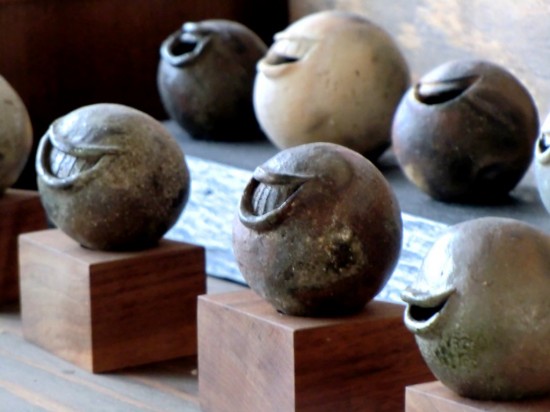
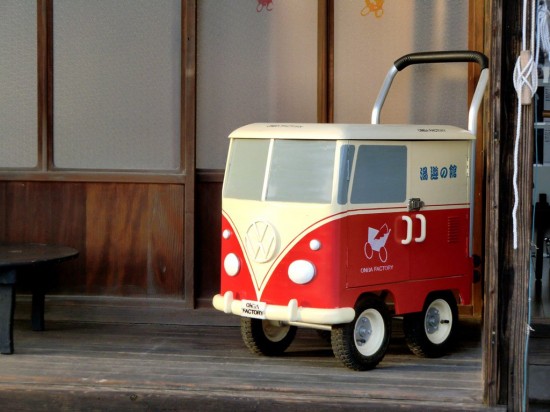
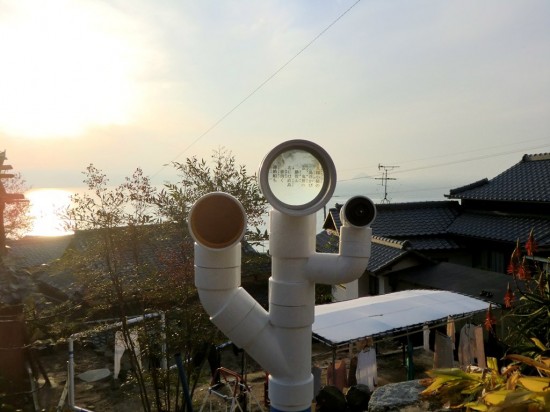
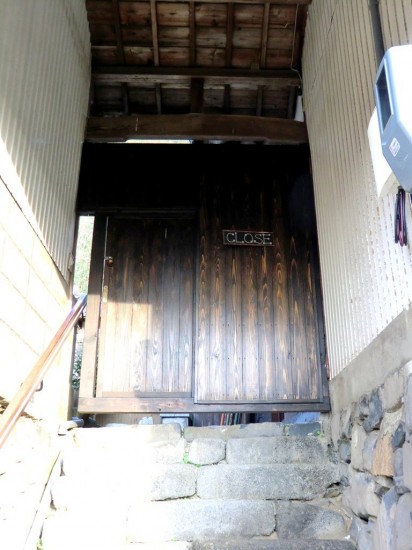
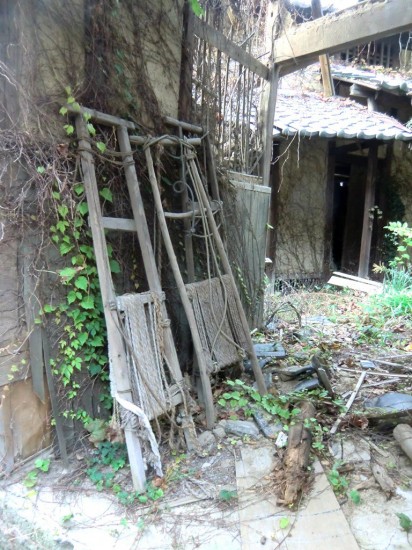
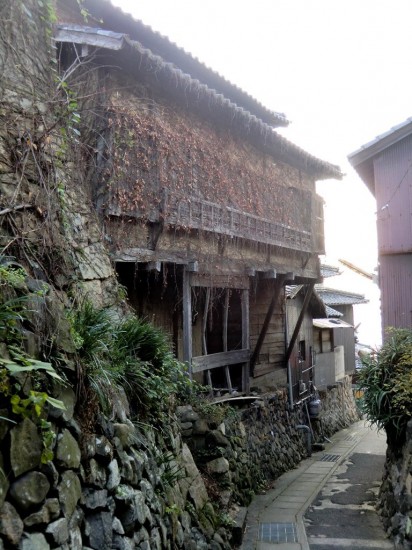
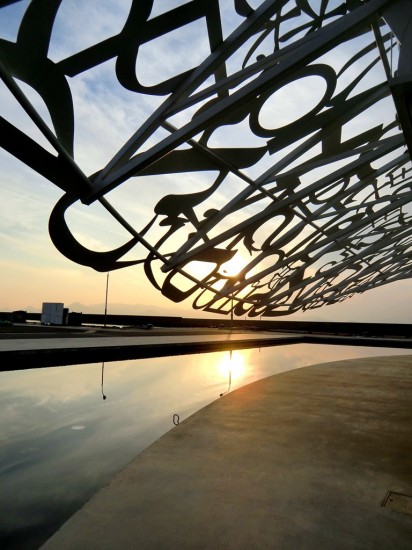

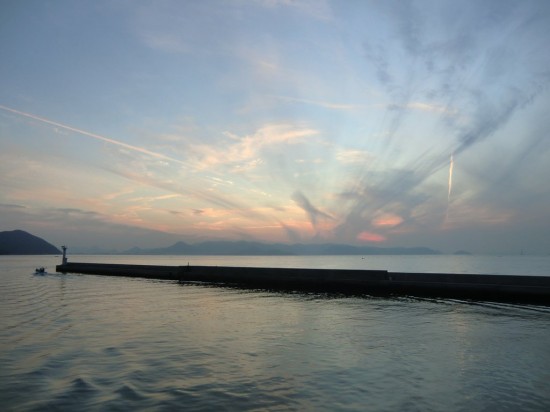
Looks like an amazing place with great food and sights.
It is.
It seems like everyone is leaving the countryside for the bigger cities.
Yes, the depopulation of the islands is a real problem. If there is no drastic change in the next 10-20 years, they’ll be ghost islands.
Hence the need to make them known to the rest of Japan and to the world, among other things.
Cats, art, beautiful seascapes … it looks like a wonderful place to live, but I assume work opportunities are very limited. Fishing and agriculture, mostly?
Unfortunately, these are pretty much the only job opportunities on the island. A few islanders do commute to Takamatsu everyday though.